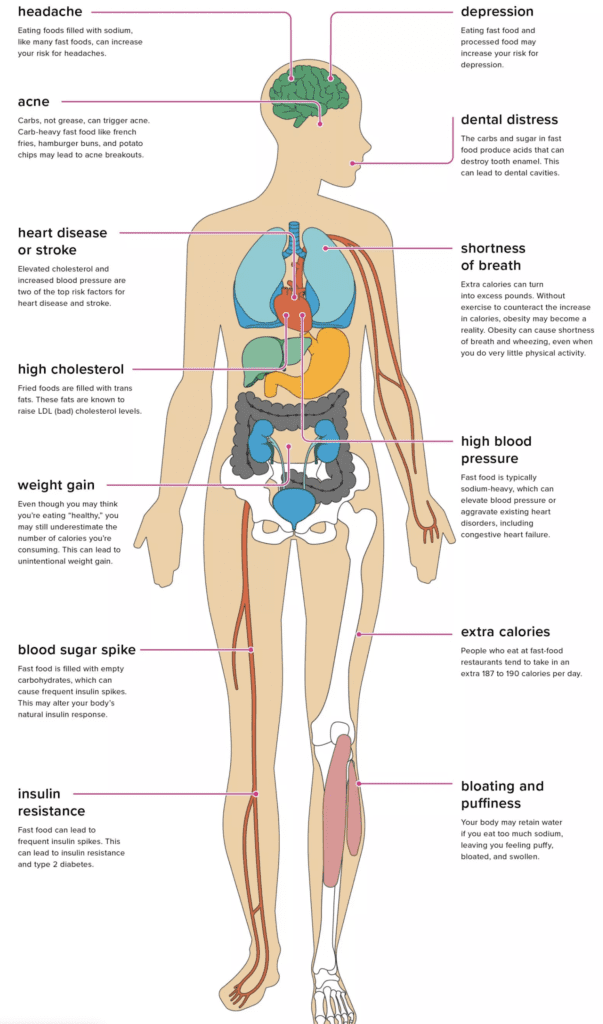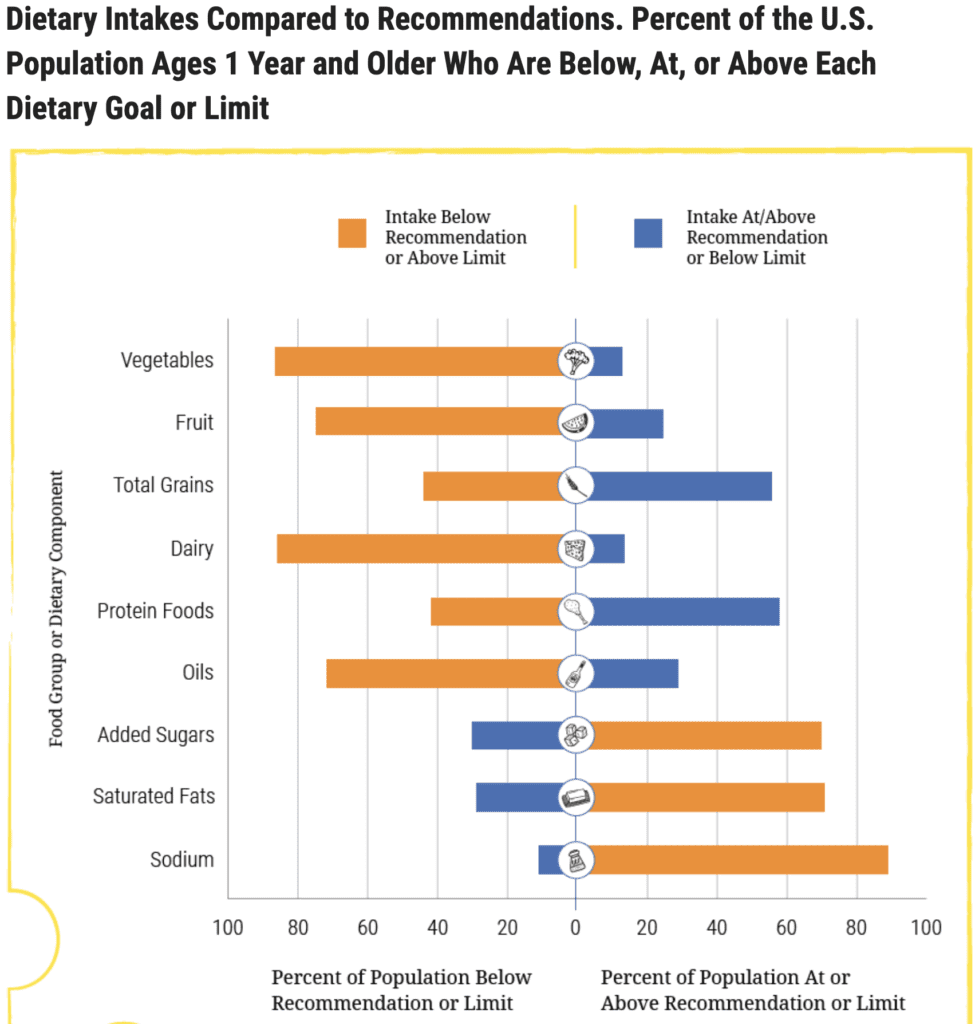Fast Food Consumption in America
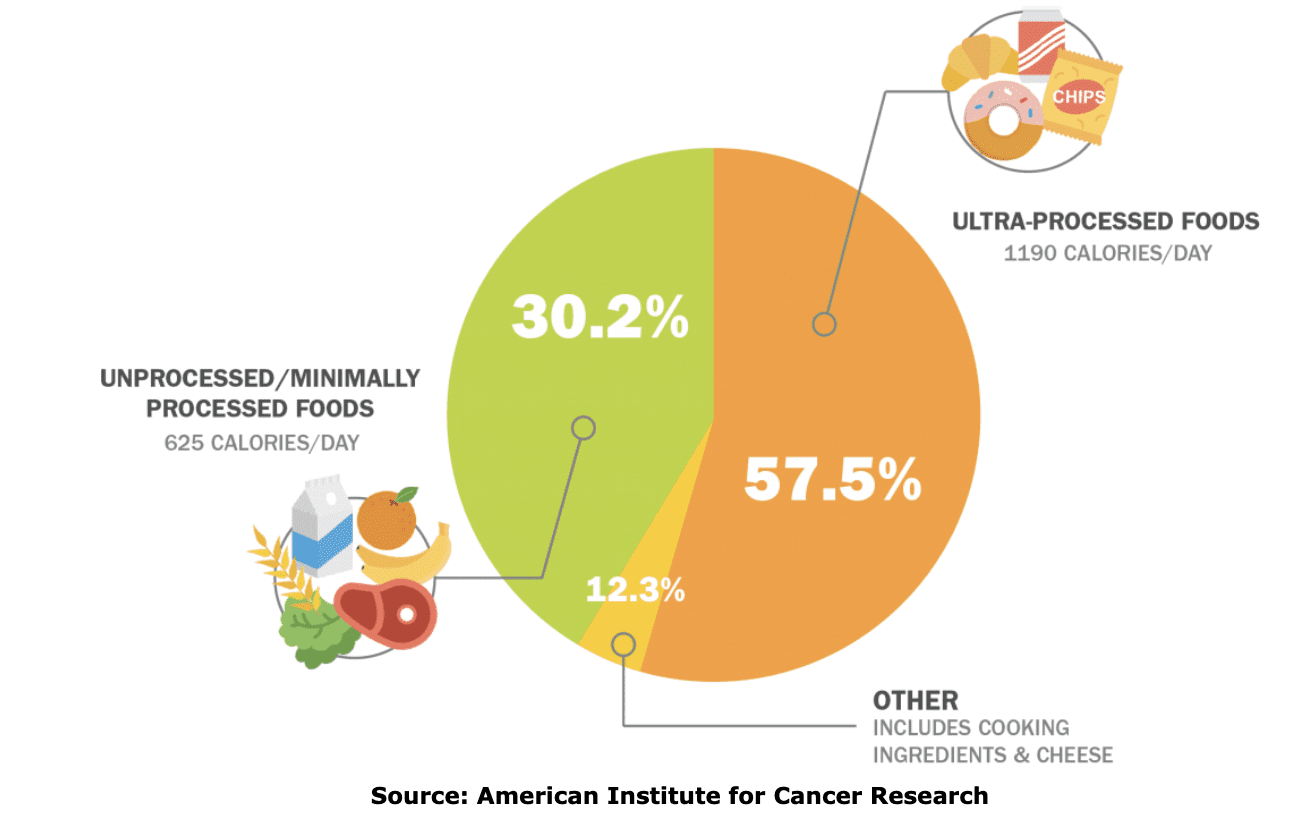
Fast Food Consumption in America is approximately one-third on any given day, despite warnings about its impact on health and obesity, the U.S. Centers for Disease Control and Prevention (CDC). The rate is especially high for young adults and gradually drops with age.
Fast-food consumption in America has been associated with increased intake of calories, fat and sodium, which is often associated with diabetes and heart disease.
The study, the first federal examination of adult fast-food eating habits, is based on a survey of about 10,000 adults from 2013 to 2016.
- During 2013–2016, 36.6% of adults consumed fast food on a given day.
- The percentage of adults who consumed fast food decreased with age: 44.9% aged 20–39, 37.7% aged 40–59, and 24.1% aged 60 and over.
- A higher percentage of non-Hispanic black adults consumed fast food than non-Hispanic white, non-Hispanic Asian, and Hispanic adults.
- The percentage of adults who consumed fast food increased with increasing family income.
- Among those who consumed fast food, men were more likely than women to eat fast food at lunch, but women were more likely to report eating fast food as a snack.
In addition, the eating patterns of many are too high in calories. Calorie intake over time, in comparison to calorie needs, is best evaluated by measuring body weight status. The high percentage of the population that is overweight or obese suggests that many in the United States over consume calories. More than two-thirds of all adults and nearly one-third of all children and youth in the United States are either overweight or obese.
How Frequent is Fast Food Consumption in America
Americans are quite healthy eaters, at least according to their own testimonies. In a survey recently published by the International Food Information Council and the American Heart Foundation, 43 percent of Americans claimed to always be on the lookout for healthy options when shopping, while 52 percent said they were at least sometimes scouting for healthy foods.
At the same time, the Centers for Disease Control and Prevention found out that more than 36 percent of Americans were consuming fast food on any given day.
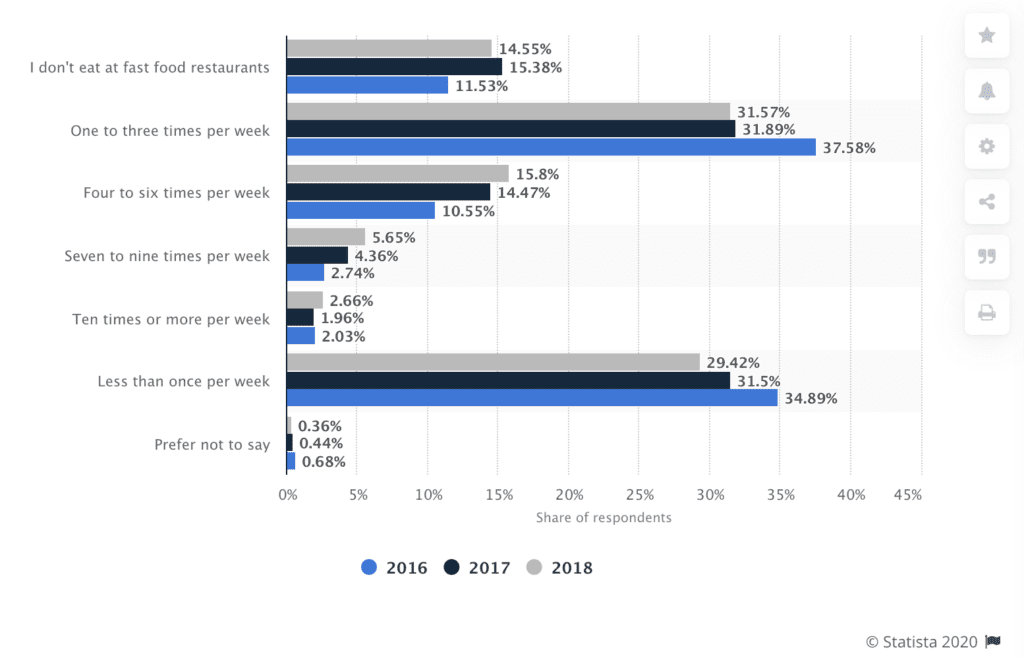
Almost half (44.9 percent) of 20- to 39-year-olds eat fast food on a given day, the survey found. The rate drops to 37.7 percent for those ages 40 to 59 and to 24.1 percent for those 60 and older.
Older men (25.6 percent) are slightly more likely than older women (22.7 percent) to make fast food a daily habit.
African American adults (42.4 percent) had a higher rate of fast-food consumption than non-Hispanic whites (37.6 percent). Somewhat lower rates were found for Hispanic adults (35.5 percent) and Asians (30.6 percent).
The rich are more likely than the poor to turn to fast food. Some 42 percent of higher-income adults eat it on a given day, and the rate drops to 36.4 percent for those of middle income and to 31.7 percent for those of lower income.
Adults eat fast food most often at lunch (43.7 percent), followed by dinner (42.0 percent), breakfast (22.7 percent) and as a snack (22.6 percent).
Fast Food in America By Meal Type
Among adults who consumed fast food, the most commonly reported eating occasions were lunch (43.7%) and dinner (42.0%), followed by breakfast (22.7%) and snacks (22.6%).
A higher percentage of men (48.3%) than women (39.1%) consumed fast food during lunch, while a higher percentage of women (25.7%) than men (19.5%) consumed fast food from snacks.
Percentage of adults aged 20 and over who consumed fast food on a given day, by sex and eating occasion: United States, 2013–2016
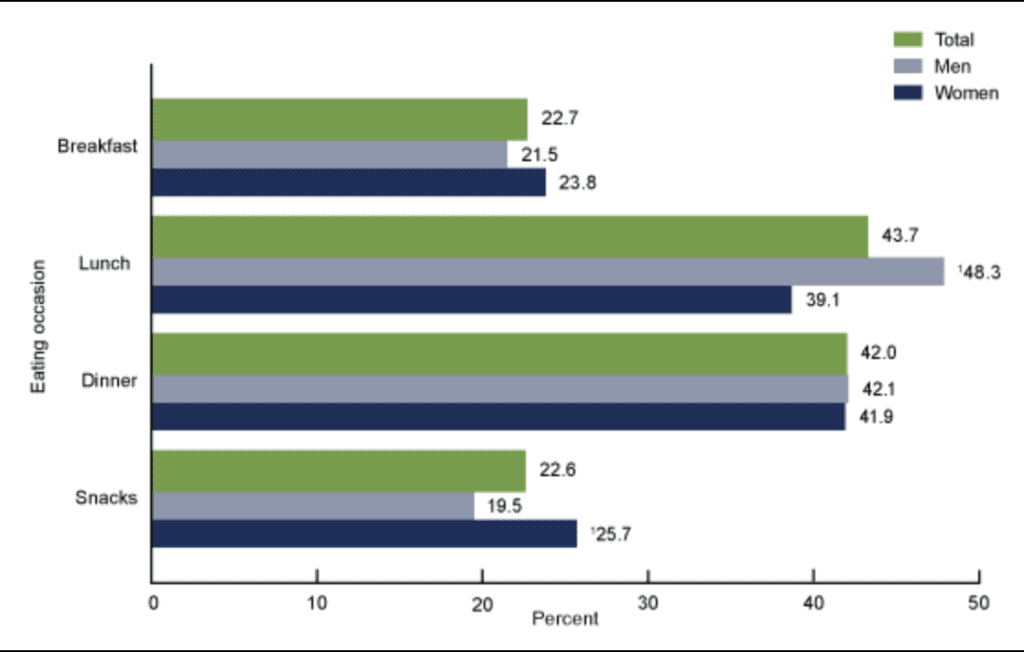
Food Consumption in America vs Healthy Foods
Many shoppers agreed that it was only moderately easy to identify healthy foods. The most sought-after source for information on the healthiness of a product was the nutrition panel which 69 percent of respondents said they would refer to very frequently or always. 67 percent said they frequently read the ingredients list, with 54 percent explicitly looking for the absence of certain ingredients. 17 percent said they were cross-checking information on mobile apps, including many Millennials.
This age group of people 25 to 34 years old appeared to be the most health conscious according to the study. 51 percent said they were always looking for healthy food while shopping, which is a step up from older cohorts as well as younger people of the Generation Z (18-24 years old).
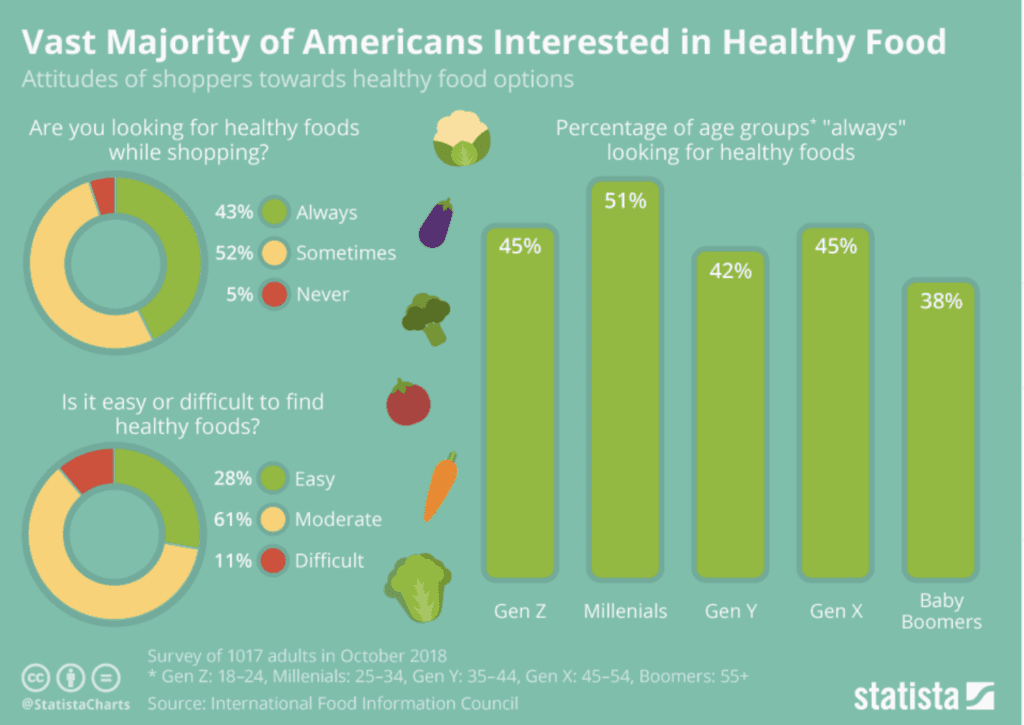
The typical eating patterns currently consumed by many in the United States do not align with the Dietary Guidelines, when compared to the Healthy U.S.-Style Pattern.
* About three-fourths of the population has an eating pattern that is low in vegetables, fruits, dairy, and oils.
* More than half of the population is meeting or exceeding total grain and total protein foods recommendations.
* Most Americans exceed the recommendations for added sugars, saturated fats, and sodium.
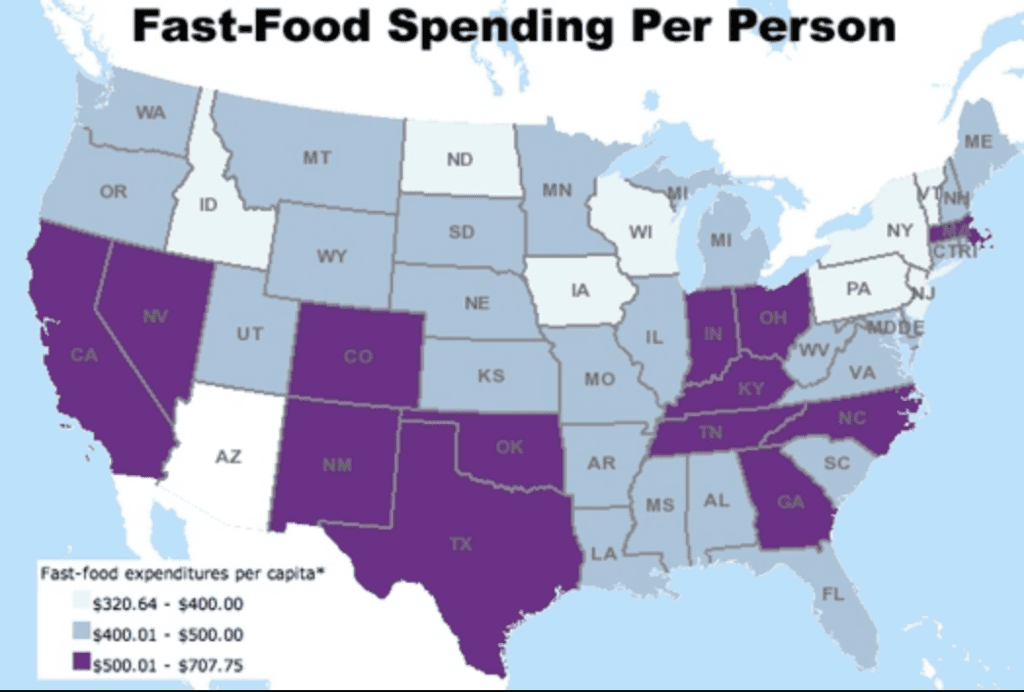
Fast Food Spending Per Person in the U.S.
For the record, “fast-food restaurant” is defined according to the USDA’s classification: Limited-service restaurants include establishments primarily engaged in providing food services (except snack and nonalcoholic beverage bars) where patrons generally order or select items and pay before eating. Food and drink may be consumed on premises, taken out, or delivered to the customer’s location. Some establishments in this industry may provide these food services in combination with alcoholic beverage sale.

Gallons of Soft Drinks Consumed Per Person, By State
In 18 states, more than 26% of adults consume sweetened-beverages such as regular soda and fruit drinks at least once daily. Sugary drinks are one of the primary sources of added sugars in U.S. diets and have been associated with a range of negative health outcomes. Below are the top 3 consumers:
Mississippi
Pct. consuming soda and/or fruit drinks daily: 41.4%
Obesity rate: 35.1%
Pct. consuming vegetables less than daily: 23.2%
Median household income: $37,963
Tennessee
Pct. consuming soda and/or fruit drinks daily: 39.2%
Obesity rate: 33.7%
Pct. consuming vegetables less than daily: 26.8%
Median household income: $44,297
Nevada
Pct. consuming soda and/or fruit drinks daily: 36.3%
Obesity rate: 26.2%
Pct. consuming vegetables less than daily: 24.4%
Median household income: $51,230
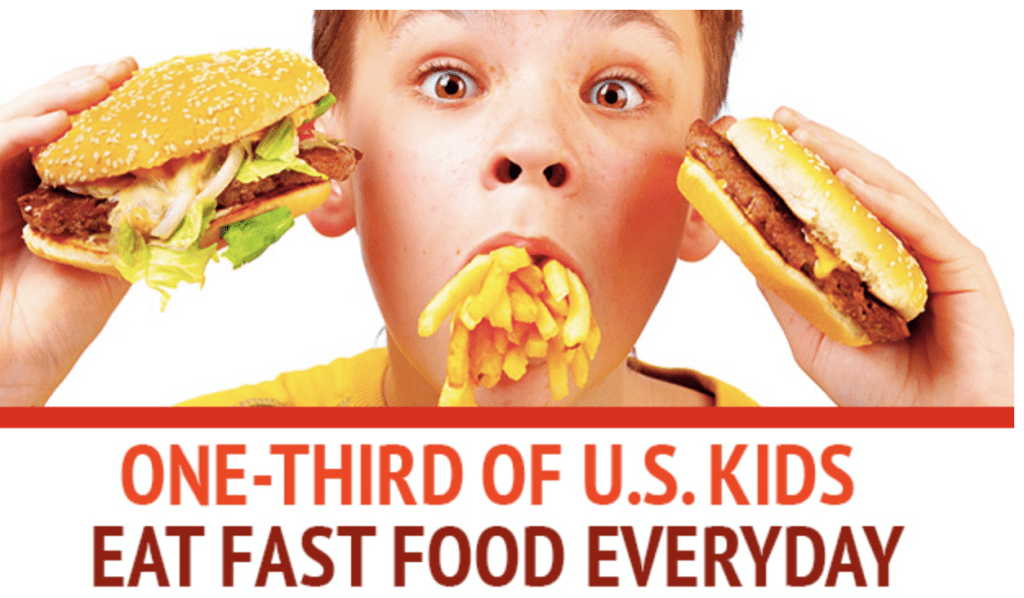
1/3 of U.S. Kids Eat Fast Food Every Day
Obesity is the new concern for many kids in the US. A new report reveals 12 percent of them get calories from fast-food restaurants.
One earlier report revealed a figure of 11 percent for adults.
It is reported by National Center for Health Statistics about one-third of the kids eat fast food on any given day.
In past more than one decade 17 percent kids have been found obese and this is a national health concern.
Considering a period of past 30 years it has been found obesity rate in children have increased by two times. Earlier, in 1980, it was just 7 percent.
The Effects of Fast Food on the Body
